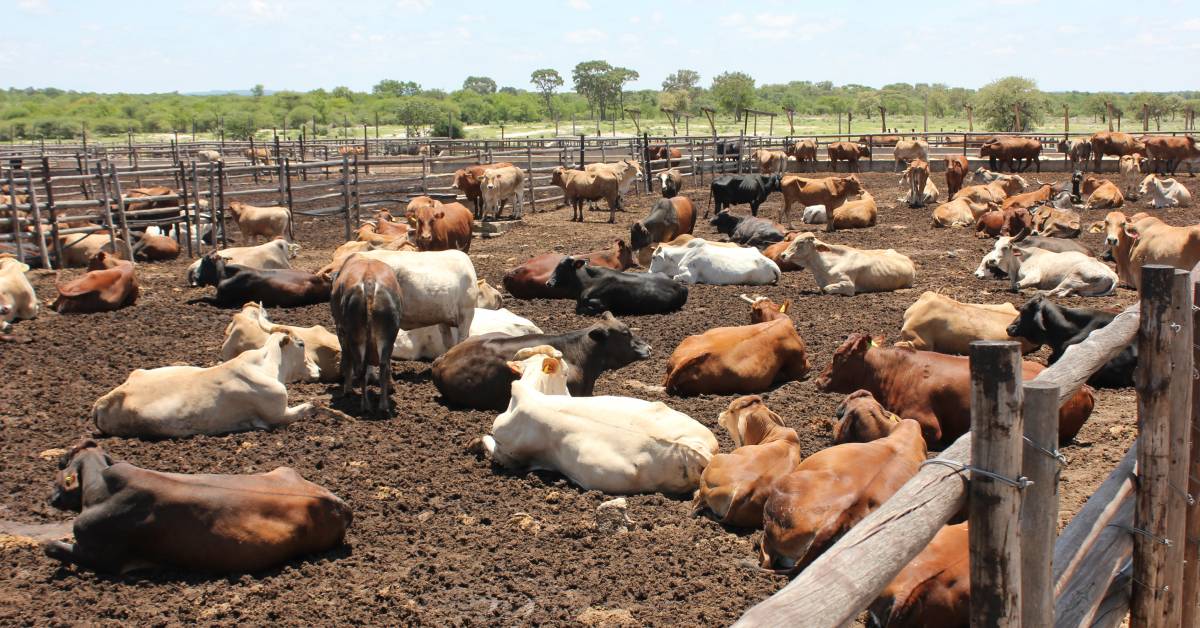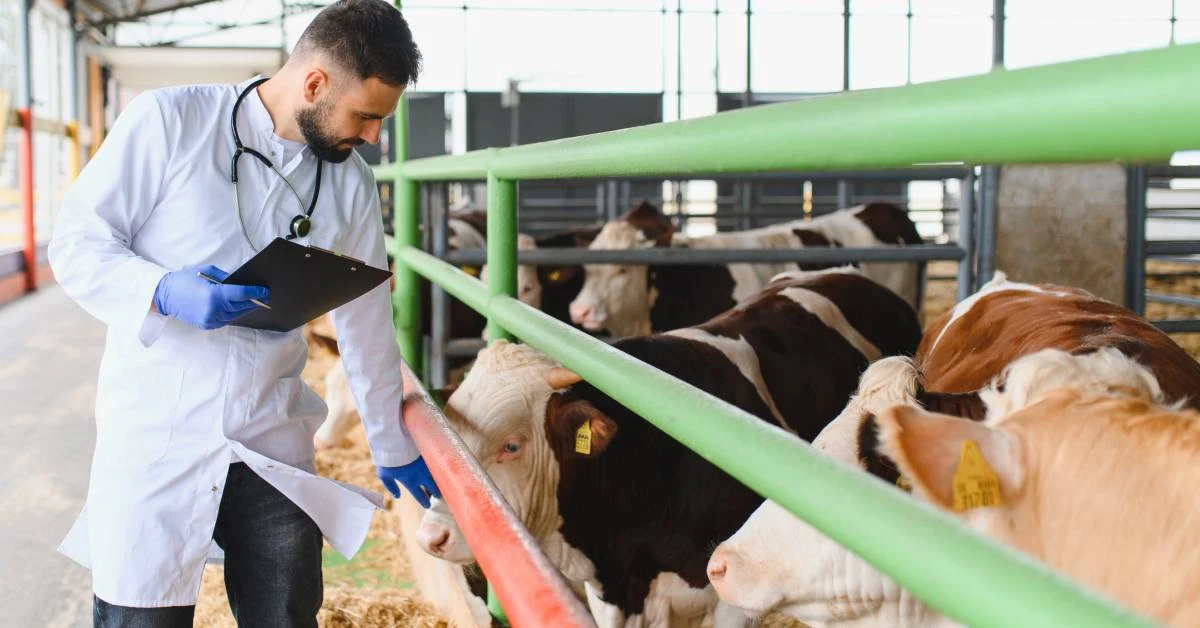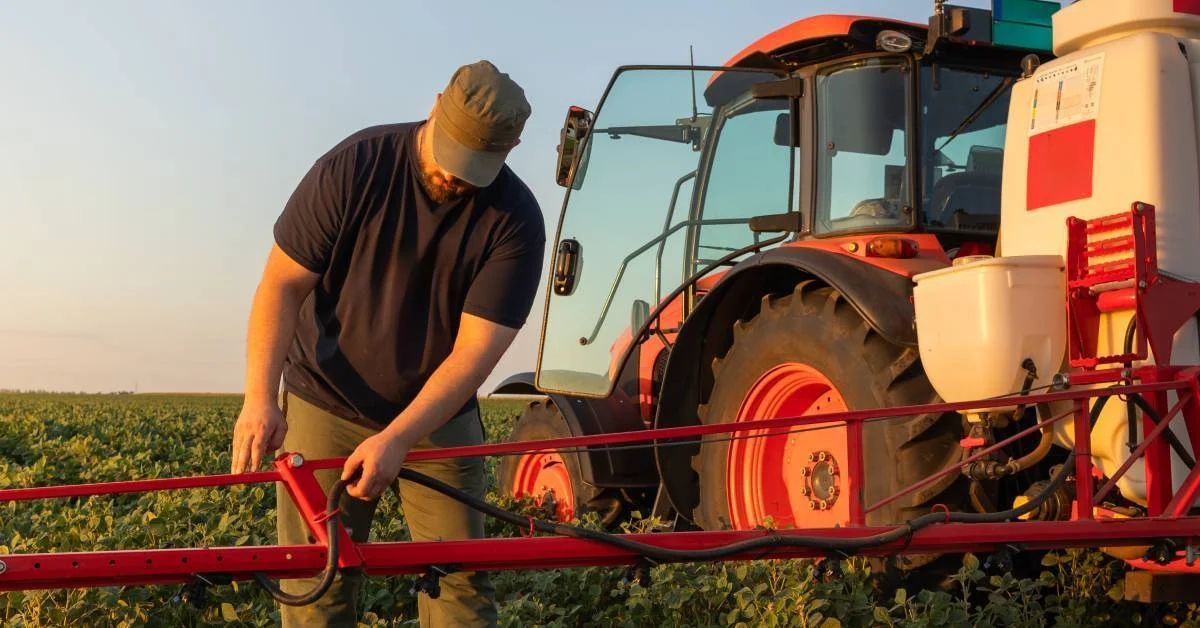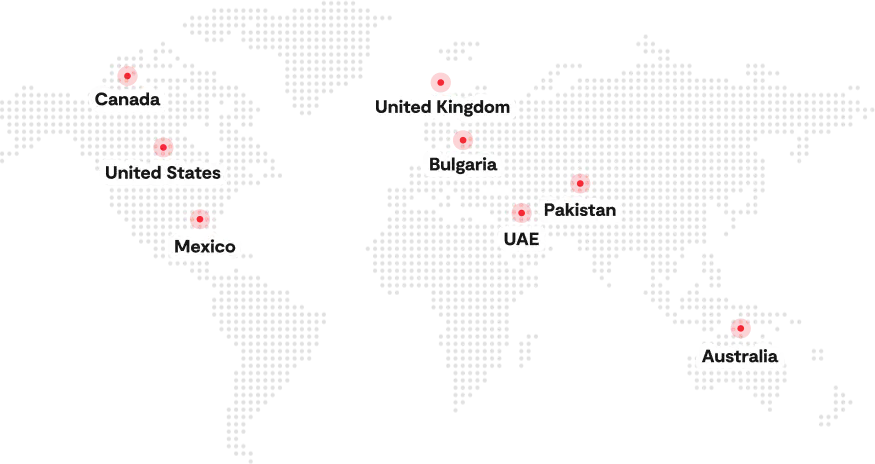As temperatures climb, managing heat stress in cattle becomes more than just a seasonal concern. It’s a performance issue, an animal welfare issue, and in many cases, a bottom-line issue. Heat stress occurs when environmental conditions, including high temperature, humidity, and lack of airflow, overwhelm a cow’s natural ability to cool itself. The impact can be seen quickly as cattle go off feed, gain slows down, and stress markers rise.
While anyone managing cattle must stay alert during heat events, operations with high-density herds, like feedlots, face greater risk due to limited airflow and higher metabolic loads. Research shows that when the Temperature-Humidity Index (THI) exceeds 68, even mild stress can start to reduce intake and alter behavior. When hot conditions persist overnight, the heat stress in cattle becomes cumulative, leaving animals with little to no recovery time before the next day’s heat.
This blog lays out clear, modern steps to help you manage cattle heat stress. It covers early signs, immediate actions, and longer-term strategies that work under real operational pressure. It also discusses the importance of frequent animal checks during heat events and how simple digital tools can help monitor conditions and spot risks early.
Understanding The Internal Effects of Heat Stress in Cattle
Cattle rely heavily on their ability to dissipate internal heat to maintain performance, health, and comfort. Unlike humans, they cannot sweat effectively and instead rely primarily on respiration to shed excess heat. When temperatures rise, especially with high humidity, this mechanism struggles to keep up, and heat stress begins to appear in cattle.
Once cattle experience heat stress, their internal systems shift in ways that directly impact performance and welfare. Here’s what typically happens inside the animal:
- Reduced Feed Intake: Cattle voluntarily eat less to lower internal heat production. This leads to immediate average daily gain (ADG) drops and poorer feed efficiency.
- Increased Respiration Rate: To cool down, cattle breathe faster, often over 80 breaths per minute. However, if the humidity is high, this method becomes less effective.
- Redirected Blood Flow: Blood shifts toward the skin to release heat, reducing supply to the digestive tract. This weakens gut health and immune response, increasing the risk of digestive upset or respiratory issues.
- Suppressed Rumen Activity: Heat stress slows fermentation and can trigger acidosis, especially in high-energy finishing diets.
- Increased Core Temperature: If body temperature exceeds 105°F, cellular damage begins. Severe cases can lead to fatigue, collapse, or even death.
Young or recently processed animals and those recovering from illness are typically the first to show signs, as their systems are already compromised. Meanwhile, finishing cattle are at higher risk due to greater body mass and heat from metabolism.
Recognizing how heat stress in cattle affects internal function helps managers respond early, not just to symptoms, but to the root causes driving stress and performance loss.
Key Risk Factors and Early Warning Signs for Heat Stress in Cattle
Heat stress in cattle builds gradually, and so do the signs, often starting with minor changes that are easy to miss in a busy feedyard. The challenge isn’t just knowing it can happen, but knowing when it’s starting. Being aware of the right risk factors and early signs allows you to act before cattle conditions worsen.
Here is a breakdown of the key factors that increase cattle’s vulnerability to heat stress, including both environmental conditions and animal-specific traits:
1. High Body Weight and Advanced Days on Feed
Cattle with heavier weight generate more internal heat and have less surface area to release it. They store heat longer, making late-finishing pens the first to show stress in high temperatures.
2. Dark-Hided or Bos taurus Genetics
Black-hided cattle absorb more solar radiation (up to 30–40% more than lighter coats) and dissipate heat less efficiently. Bos taurus breeds also have lower heat tolerance, making them more susceptible during prolonged sun exposure.
3. High Humidity and Consecutive Warm Nights
When nights stay warm and humid, cattle can’t shed daytime heat. This builds cumulative heat stress in cattle, leaving animals increasingly vulnerable even if daily temperatures remain constant.
4. Limited Airflow or Poor Pen Orientation
Pens with low elevation, trees, or windbreaks nearby can block airflow. These microclimates trap heat and humidity, creating hot zones that increase stress even within open-air yards.
5. Excessive Stocking Density
Tight pen space means more collective heat, limited airflow between animals, and greater bunching near water or shade, all of which raise body temperatures and risk of heat stress in cattle.
6. Compromised or Recovering Health Status
Cattle recovering from bovine respiratory disease or other stressors are less able to regulate heat. They show signs of stress earlier and are at higher risk of severe outcomes during heat events.
Use this checklist of early warning signs of heat stress in cattle during morning and late-afternoon pen checks, especially during multi-day heat events or when the THI > 72.
☑️Increased Respiratory Rate
Breathing exceeds 80–100 breaths per minute. One of the first signs cattle are struggling to cool internally.
☑️Open-Mouth Breathing or Panting
Indicates more severe stress. Often seen in black-hided or heavier animals first.
☑️Cattle Crowding Near Water or Shade
Early bunching in corners or near waterlines often signals discomfort before visible panting begins.
☑️Reduced Feed Intake or Bunk Attendance
Cattle back off feed slightly before other symptoms show. A drop in morning feed bunk activity is a key red flag.
☑️Excessive Salivation or Drooling
A sign of elevated internal temperature and evaporative effort. Look for wet muzzles or stringy saliva.
☑️Extended Necks and Stiff Posture
Animals stretch their necks forward to ease breathing, often while standing still for long periods.
☑️Lethargy or Reluctance to Move
Sluggish cattle may stand without eating or lie down away from the group. These animals are approaching their threshold.
☑️Abnormal Pen Behavior
Restlessness, pushing at waterers, milling without feeding, especially during hotter times of day.
Mitigation Strategies to Reduce Cattle Heat Stress in Feedlots
Managing heat stress in feedlots isn’t about one-off fixes. It’s about knowing where problems start and acting before performance slips. Shade and sprinklers help, but they’re only part of the picture. The real value lies in how you manage airflow, ration timing, pen layout, and water access, not just during the heatwave, but weeks before it. The strategies below focus on what can be done immediately and what needs to be built into your system to stay ahead of the next one.
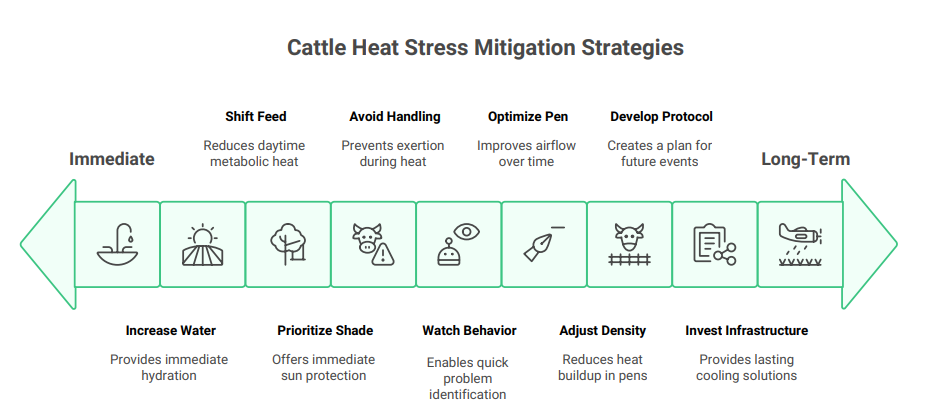
Immediate Response Strategies During Heat Stress In Cattle
When a heat event hits, quick adjustments can protect intakes, reduce pulls, and prevent losses. These actions are designed for rapid deployment when THI climbs and cattle start showing early signs of stress.
1. Increase Water Access by 2x
Cattle can drink up to 1.5–2% of their body weight in water per hour during peak heat. A single water source may not handle that pressure, especially in high-density pens, leading to crowding, pushing, and even cattle backing off water altogether. Adding a temporary tank or splitting water points across panels can relieve this bottleneck.
2. Shift Feed Delivery to Late Afternoon
When cattle receive their feed ration in the morning, the fermentation process adds internal heat just as the external temperature is peaking. By shifting the main feed delivery to early evening, you reduce total heat load at the most vulnerable time of day. The key is balance! You still want cattle to clean up the bunk, but on their body’s timeline, not yours. Yards using digital cattle feeding schedules synced with weather forecasts have an easier time making these shifts proactively, not just in hindsight.
3. Prioritize Shade Where It Matters Most
Blanket shading a yard is costly and often unnecessary. Focus on the pens that carry the most risk, like late-finishing groups, black-hided cattle, or pens with limited airflow. Even lightweight shade cloth stretched over a section of the pen, especially over waterers, can give cattle a place to breathe.
4. Avoid Handling After Mid-Morning
Every trip through the chute or hospital lane adds to an animal’s heat load. Even something as routine as a pull for lameness or re-check can push vulnerable cattle past their threshold. That’s why many feedlots either front-load processing before 10 a.m. or postpone altogether during high THI days. A centralized cattle health management log, even a simple digital one, helps coordinate between teams so that cattle aren’t reworked just because one crew didn’t know what the other already did.
5. Watch the Bunk and Water for Behavior Changes
Before you see cattle bunching or panting, you’ll often notice more subtle signs, slower bunk approach, uneven water use, or pens finishing feed later than usual. These shifts often go unflagged unless someone’s specifically tracking them. You don’t need a sensor on every head, but consistent observation, paired with simple pen notes or intake logs, can give your team hours of extra lead time before signs turn clinical.
Long-Term Strategies to Minimize Heat Stress Risk in Cattle
Daily responses help you get through a heat event, but they don’t solve the underlying vulnerabilities that make certain pens, cattle types, or layouts more prone to stress in the first place. Long-term strategies are about identifying those weak points and reducing overall risk before temperatures rise.
1. Optimize Pen Layout and Airflow
Certain pens consistently run hotter, whether due to low elevation, obstructed wind flow, or drainage that turns dry ground into heat-trapping mud. Over time, these microclimates become performance liabilities, especially if they go unaddressed between seasons. That’s why routine yard upkeep matters. Teams using software for regular feedyard maintenance to log and manage recurring airflow or drainage issues during summer are better positioned to flag and fix them before the next cycle hits.
2. Adjust Stocking Density in Vulnerable Pens
Overstocked pens build and hold heat, not just because of body heat, but because tight spaces reduce airflow between animals. Strategically lowering stocking density in certain pens during peak summer months, especially for black-hided or heavy cattle, reduces both metabolic and environmental stress. It also reduces the chance of bunching at waterers or in corners.
3. Develop a Heat Stress Response Protocol
Many yards have a protocol for BRD, but not for heat. Establishing a standard operating procedure that outlines feeding shifts, pen checks, shade setups, and when to pause processing can improve team response and reduce lag time. When everyone knows the plan before the heatwave hits, the response becomes more proactive. This is where digital SOPs or centralized communication tools help, especially when weather changes quickly and you’ve got to mobilize multiple crews fast.
4. Invest in Strategic Shade or Cooling Infrastructure
While portable shades and water tanks help in the short term, permanent structures offer consistency. Shade structures over hospital pens, high-risk rows, or along wind-blocked fence lines can prevent the most critical stress cases. Some yards also use sprinklers, not to soak, but to break the heat during still, dry afternoons. These investments don’t need to be large-scale to be effective; they need to be placed based on data and patterns, not assumptions.
Tracking the Right Metrics For Smarter Heat Stress Management
To manage heat stress in cattle, you don’t need to track everything; just the things that help you catch heat stress early and respond with confidence. For most yards, that means watching beyond just temperature. It means paying attention to when cattle go off feed, how they recover, and which pens tend to struggle first. The metrics below are ones that make a difference when you’re managing cattle through back-to-back heat days:
| Metric | How To Track |
| Temperature-Humidity Index (THI) | Use on-site weather stations or THI calculators using temp + humidity readings |
| Panting Score | Visual scoring (0–4 scale) of cattle respiration and posture |
| Water Trough Activity | Visual checks or motion-triggered cameras; monitor refill frequency |
| Feed Intake Drop | Track bunk reading records or automated feed systems |
| Overnight Temperature Trends | Weather tracking apps or in-yard loggers; check minimum temps |
| Cattle Bunching or Shade Crowding | Visual observation or drone footage during peak hours |
| Pen Surface Condition | On-ground checks for dryness, dust, or manure build-up |
| Wind Speed and Air Movement | Use handheld anemometers or mounted sensors in key zones |
Most yards are already watching some of these numbers, but the difference comes from how consistently they’re logged and whether they’re easy to access when decisions need to be made. In the middle of a heat spell, digging through scattered notes or relying on memory isn’t enough. This is why digital cattle record-keeping tools are really important. A well-set-up feedlot management software lets you track intake, health pulls, THI trends, and recovery patterns in one place, so you’re not reacting blindly, and nothing important gets missed.
Conclusion
Summer is here, and with it, the kind of conditions that test every part of your yard’s routine. Whether it’s managing intake dips, spotting early signs of distress, or adjusting pen strategies on the fly, this season leaves little room for guesswork. Heat stress in cattle builds gradually, but its impact shows up fast in performance, health, and closeouts. The difference often comes down to preparation, which includes tracking the right metrics, responding early, and having systems in place before the heat sets in. Every operation faces heat, but the ones that come through it stronger are the ones that plan for it, measure what matters, and act before it’s visible.
FAQs
What Are the Signs of Heat Stress in Cattle?
Early signs often include increased respiration rate, drooling, reduced feed intake, standing rather than lying, and crowding around water sources. As stress intensifies, panting becomes more pronounced, and cattle may show signs of lethargy or open-mouth breathing. Spotting these early changes is critical, especially during consecutive hot days, to prevent long-term performance and health impacts from heat stress in cows.
What Are the Best Ways to Provide Cooling for Cattle in Feedlots?
Effective cooling in feedlots starts with shade access, improved airflow, and strategic watering. Sprinkler systems, when used correctly, can also aid evaporative cooling without creating mud or compaction issues. Adjusting handling schedules and feeding times to cooler hours further reduces stress. Identifying heat-prone pens based on layout or wind exposure allows yards to prioritize interventions where they matter most.
How Can I Optimize Cattle Health During Heat Stress?
It starts with prevention. Ensuring high-risk pens are monitored more closely, feeding is timed to match behavior, and hydration is never compromised. Feedlot health management software can be a valuable help not just for recording data but also for spotting patterns early. Over time, this structured approach can improve resilience and reduce the long-term impact of heat stress in cows across finishing groups.

